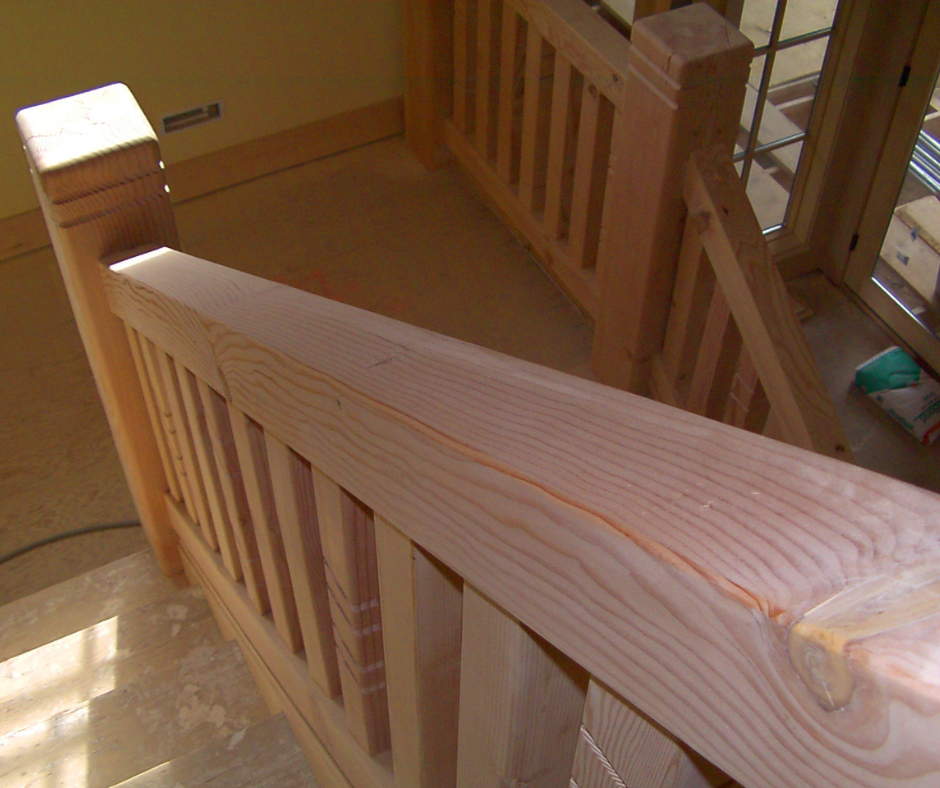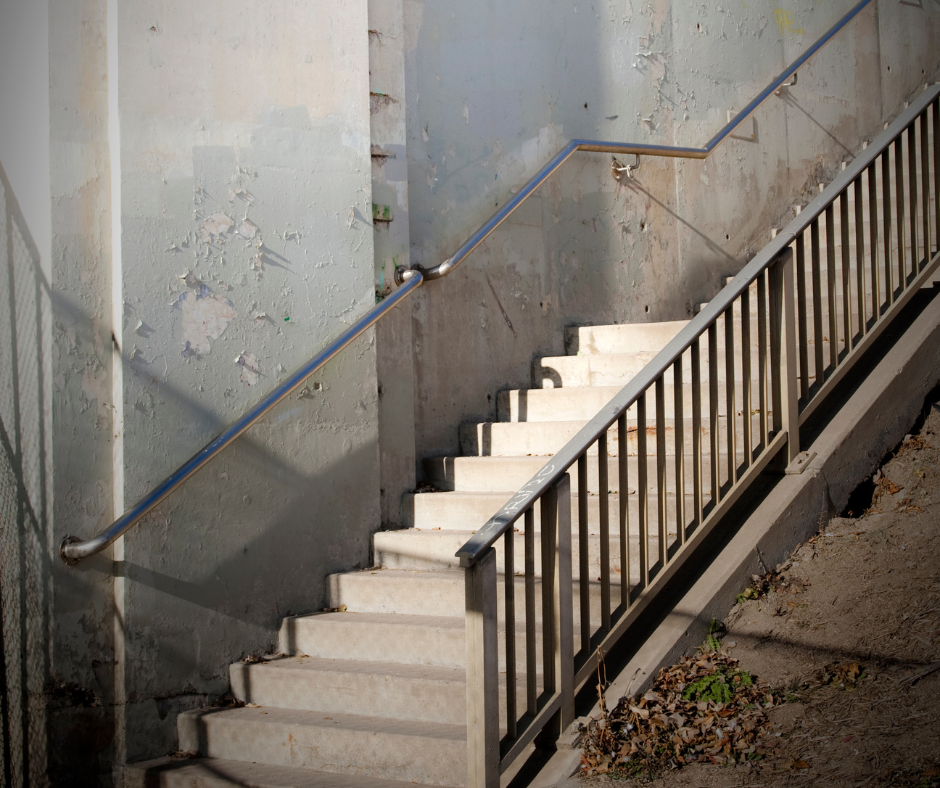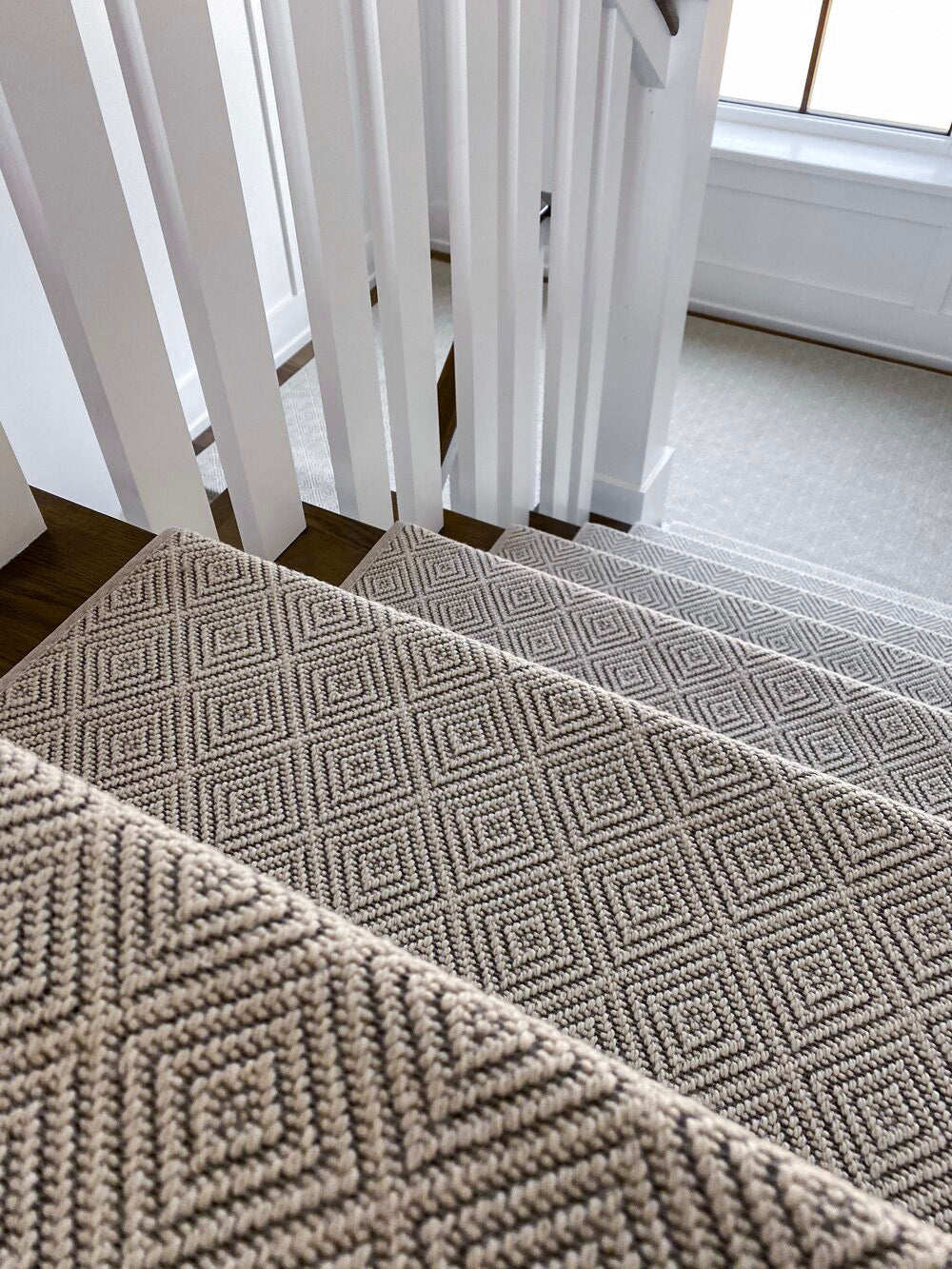A well-designed staircase enhances both safety and style, but incorrect stair handrail dimensions can lead to accidents.
Handrails should be positioned 34 to 38 inches above the stair tread to provide proper support and meet building codes.
Pairing them with carpet stair treads improves grip, reduces slips, and adds an elegant touch.
Understanding stair handrail dimensions ensures compliance and ease of use for everyone in your home or business
This guide covers essential measurements, material choices, and installation tips.
Keep reading to learn how to create a safer, more stylish staircase.
What Are the Standard Stair Handrail Dimensions?
The size of a stair handrail is critical for both comfort and compliance with building codes.
The standard handrail height should be between 34 and 38 inches, measured from the edge of the stair tread to the top of the handrail.
This height range allows people of all ages and physical abilities to use the handrail comfortably.
A handrail that is too low may not provide adequate support, while one that is too high can be difficult for some individuals to reach.
Whether installing a new staircase or upgrading an existing one, ensuring the correct handrail height is crucial for safety.
What Is the Standard Diameter of a Handrail?
The diameter of a handrail plays a significant role in how easy it is to grip.
Handrails should have a diameter between 1.25 and 2 inches, as this range provides a secure and comfortable grip for most users.
If a handrail is too thin, it may not offer enough support, while a handrail that is too thick can be challenging to grasp, especially for children or individuals with limited hand strength.
What Is the Width of a Handrail?
The width of a handrail is essentially the same as its diameter.
When a handrail has a diameter of 1.25 to 2 inches, it also has a width within the same range.
This ensures the handrail remains easy to grip while providing necessary support.
In commercial settings, some handrails may have a different profile, such as rectangular or oval shapes, but they should still meet the same graspable requirements to comply with safety regulations.
What Size Is a Graspable Handrail?
A graspable handrail must be designed to allow users to securely wrap their hand around it for stability.
This is why the ideal diameter remains 1.25 to 2 inches.
For non-circular handrails, regulations require a perimeter of no more than 6.25 inches and a cross-section dimension of at least 0.625 inches.
These measurements ensure that a person can fully grip the handrail without struggling.
Commercial Stair Dimensions and Handrail Requirements
In commercial settings such as offices, malls, and public buildings, staircases must comply with stricter regulations to accommodate higher foot traffic.
Width Requirements
Commercial stairs are generally wider than residential ones to allow for safe movement of multiple people at a time.
The width is typically between 44 and 60 inches, depending on the type of building and its occupancy level.
Tread and Riser Dimensions
For commercial stair dimensions, the riser (the vertical section of the step) should be no more than 7 inches high, while the tread (the horizontal part of the step) must be at least 11 inches deep.
This ensures a stable walking surface, preventing trips and falls.
Wider treads and shorter risers provide a safer and more comfortable stairway experience.
Handrail Placement in Commercial Buildings
In commercial settings, staircases must have handrails on both sides for increased safety.
These handrails must run continuously along the staircase without breaks, allowing users to maintain stability as they move up or down the stairs.
Handrails in commercial buildings must also extend at least 12 inches beyond the last step at the top and bottom landings to provide extra support.
Understanding Stair Nosing Dimensions
The stair nosing dimensions are another crucial factor in stair safety.
The nosing is the part of the tread that extends slightly over the riser, providing extra space for foot placement.
The recommended stair nosing dimensions range from 0.75 inches to 1.25 inches beyond the tread.
This added space helps reduce the risk of slipping while descending stairs.
Stair nosing should also have a slight round edge or a beveled design to prevent sharp corners that could lead to injuries.
In commercial buildings, stair nosing may also feature slip-resistant materials such as rubber or metal strips to enhance traction, particularly in high-traffic areas.
Can I Use a 2x2 for a Handrail?
Using a 2x2 for a handrail is not recommended because it does not meet standard building codes.
A proper handrail should have a diameter between 1.25 and 2 inches to ensure safety and compliance.
A 2x2 is too small for a secure grip, making it unsafe, especially for elderly individuals or children who rely on handrails for support.
Instead, using a properly sized and code-compliant handrail will provide the necessary stability and peace of mind.
Materials for Handrails and Their Benefits
Choosing the right material for a handrail is just as important as getting the dimensions right.
Here are some common handrail materials and their benefits:
Wood Handrails
-
Classic and elegant appearance
-
Ideal for residential settings
-
Can be stained or painted to match interior decor
Metal Handrails
-
Durable and resistant to wear
-
Suitable for both residential and commercial use
-
Available in stainless steel, aluminum, or wrought iron
Vinyl Handrails
-
Low maintenance and easy to clean
-
Weather-resistant, making them ideal for outdoor staircases
-
Affordable and available in various colors
Glass Handrails
-
Modern and stylish aesthetic
-
Often combined with metal supports for added strength
-
Ideal for contemporary home or commercial designs
Safety Tips for Installing Handrails
Correct installation is just as important as choosing the right stair handrail dimensions.
Follow these tips to ensure safety:
-
Secure Mounting: Handrails must be firmly attached to walls or balusters with strong brackets. Loose handrails can lead to serious accidents.
-
Smooth Surface: Ensure the handrail has a smooth surface to prevent splinters, scratches, or cuts.
-
Proper Lighting: Keep stairways well-lit to ensure clear visibility of handrails and steps.
-
Code Compliance: Always check local building codes before installing a handrail to ensure it meets safety regulations.
Stepping It Up
Ensuring the correct stair handrail dimensions is essential for safety, accessibility, and compliance with building codes.
A properly placed handrail at 34 to 38 inches offers stability and ease of use for people of all ages.
Whether for a home or commercial space, following these guidelines helps prevent accidents and enhances overall stair functionality.
By understanding stair handrail dimensions, you can create a staircase that is both secure and visually appealing.
Choosing the right materials and installation techniques ensures durability and long-term performance.
Prioritizing safety and proper design will provide peace of mind and a more comfortable experience for everyone using your stairs.
Explore Oak Valley Designs Today
Need safer, more stylish stairs? Check out our luxury carpet stair treads for extra grip and elegance.
-
Website: https://oakvalleydesigns.com/
-
Phone: 706.331.0315
-
Email: info@oakvalleydesigns.com
-
Address: 30 River Ct SW Bldg E Cartersville, Ga 30120



